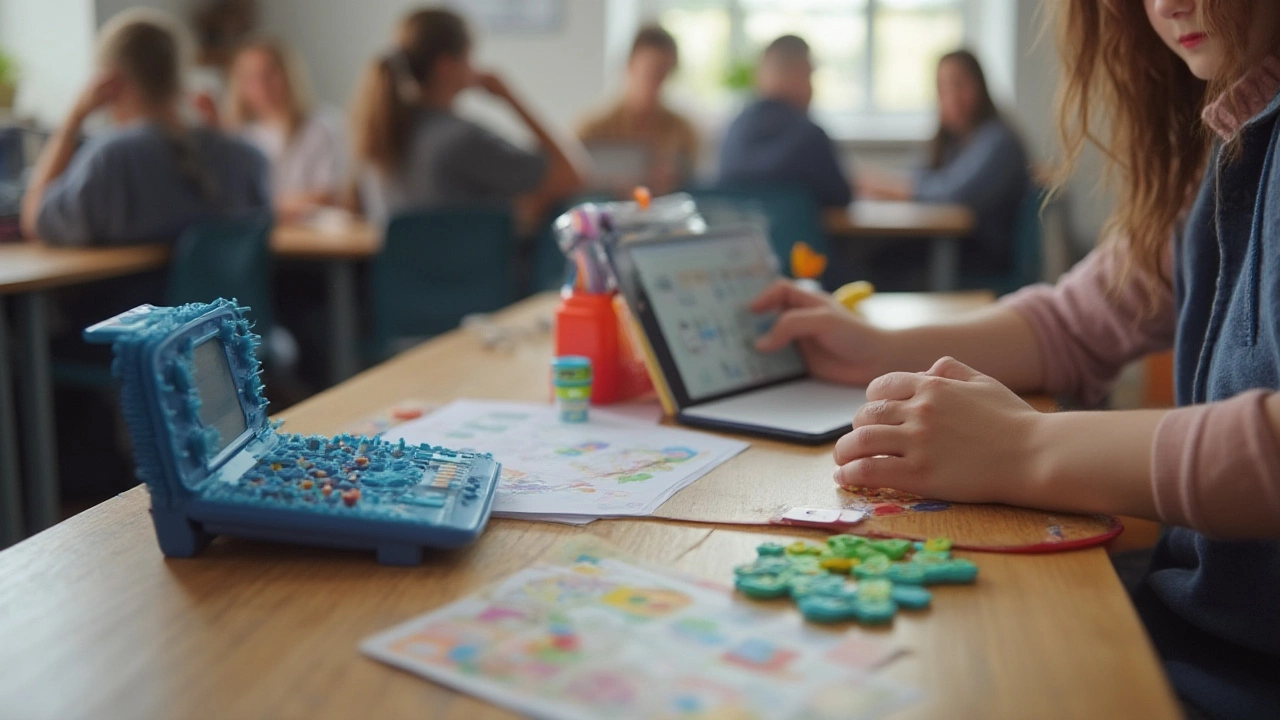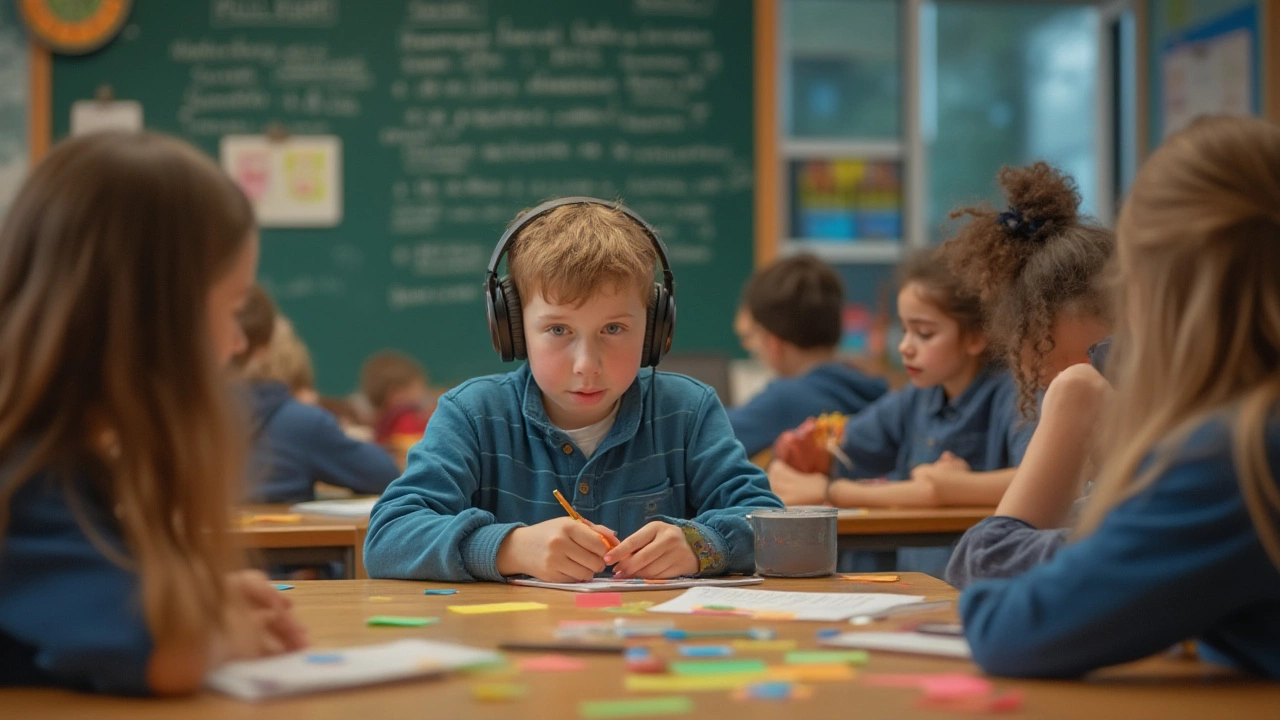You know that feeling when something seems stacked against you, and no matter how hard you try, it’s like running in sand? Imagine going through that every single day at school, just because your brain works differently. For students with ADHD, that’s not just a bad day—it’s their normal. Yet, despite stacks of scientific evidence, many schools still hold back on giving these kids the support they need, worried it’s an unfair advantage or simply not understanding what’s at stake. Truth is, accommodations are about giving everyone a fair shot, not handing out shortcuts. If you’ve ever tried to help a kid with ADHD get out the door in the morning, you know it’s not about laziness. It’s about rewiring what ‘support’ really means.
What Does ADHD Look Like in Real Life?
People toss around the acronym – ADHD – like it’s just being a bit fidgety or not paying attention. But living with ADHD isn’t that simple. Research by the CDC says about 1 in 10 kids in New Zealand have been formally diagnosed, and the real number is probably higher since girls still get overlooked. Take Orla, my daughter—she’s a rocket of ideas one second, tuned out the next, and her school bag is always in a different postcode than her shoes. It’s frustrating, sure, but it’s not her fault. She’s not aiming to ‘misbehave’. Her brain makes her world feel like juggling seven TVs with all the remotes missing. The catch? Standard classrooms expect kids to sit still, listen, scribble notes, and follow instructions—none of which play to the ADHD brain’s strengths. That’s why so many bright kids end up labelled ‘problematic’ instead of creative or smart.
It gets more complicated in high school, where deadlines tighten and social rules grow trickier. There’s pressure to keep up, not just with academics but with all the invisible expectations—remembering your gym kit, not blurting out jokes in maths, apologizing when you were just honest. A study in 2024 from Auckland University found that students with ADHD were almost twice as likely to get detentions for things like forgetting homework or talking in class. That’s not bad behavior; it’s executive dysfunction—your mind just battles with order and motivation. Stack that up day after day, and you end up with kids who feel hopeless about even trying. Add the self-esteem crash that follows, and it’s no wonder students with ADHD are at higher risk for anxiety and depression.
How Do Accommodations Change the Game?
Here’s the secret: accommodations aren’t perks. They’re a way to let kids show what they actually know rather than tripping them up on things their brains find tricky to organize. Giving extra time on tests, letting kids work in a quieter room, or breaking down big assignments into smaller steps—none of that makes the test easier. It just removes pointless roadblocks. The Ministry of Education in New Zealand actually backs this up, explaining that when students with ADHD get reasonable accommodations, they score 20-30% better on standardised assessments vs. no accommodation at all. That’s not a small difference—it’s the gap between failure and self-belief.
You’ll hear critics say, “Life doesn’t come with special treatment,” but that’s dust. In the real world, adults use digital calendars, noise-cancelling headphones, reminders on their phone—the grown-up version of accommodations—every day. Why shouldn’t students get the same leg-up when their brains need it to function? The truth is, if you want to measure knowledge and ability, you need to smooth out what’s unrelated—like the distraction from 29 other fidgeting classmates or the anxiety of a ticking clock. And while some argue that accommodations could breed dependence, research shows students often use them less as their self-management skills grow. Accommodations aren’t a lifelong crutch; they’re a bridge to independence.
| Accommodation Type | % Score Improvement | Self-Reported Stress Change |
|---|---|---|
| Extra Time | 28% | -45% |
| Quiet Room | 23% | -35% |
| Note-Taking Assistance | 19% | -22% |
So what works? The most effective accommodations are simple but powerful: flexible seating (like sitting at the edge of the room), audio versions of assignments, teachers verbally checking for understanding, and chunking work into bite-sized goals. Some schools in Auckland even have ‘fidget toolboxes’ in the back for anyone who needs them—no stigma, just options. The upshot: the more these get normalized, the less students feel marked out as ‘different,’ and the more everyone benefits. After all, who hasn’t had a day where their brain just refuses to switch on?

Myths and Roadblocks: What Gets in the Way of Fair Support?
The biggest hurdle isn’t just cost or time—it’s misunderstanding. Plenty of people still think ADHD isn’t real, or it’s just the result of bad parenting and too much screen time. That’s laughable if you’ve ever watched a child with ADHD work twice as hard to remember three things from their school bag and still forget two. Multiple MRI studies (Otago, 2023) show real differences in how the ADHD brain lights up, especially in areas to do with attention, impulse, and executive functioning. This isn’t about willpower or attitude—it’s wiring. Yet schools can drag their feet, worried about setting precedents or about other parents protesting.
Then there’s the paperwork. Getting an official diagnosis is no walk in the park—waiting lists stretch for months, and private assessments cost more than a PlayStation 5. Even when you have the paper proof, parents and students often have to advocate fiercely to actually get what’s needed. That alone makes some families give up or simply go without. But when you push through, the payoff is huge: higher engagement, better grades, and a drop in disruptive incidents. Teachers themselves tell me they’re less stressed when they know what supports fit who—they get to teach, not referee constant ‘behavior’ problems. And, importantly, the whole class culture shifts. Other students start to see that everyone struggles with something, and empathy spikes.
Stigma lingers, though. I remember Orla coming home upset because she was given a seat at the front—"the ADHD seat" as classmates sneered. It took a while, but her teacher made flexible seating normal for everyone. That kind of universal design—where tweaks are available to all, not just those with paperwork—actually does more to close the gap and kill off shame. Instead of asking “Why does she get that?” kids think, “Cool, I could try that too.”
Making It Work: Tips for Families, Teachers, and Schools
Getting ADHD accommodations right isn’t just about ticking boxes or following a script—it’s personal. Each student’s needs shift as they grow. Here’s what helps in real life:
- ADHD accommodations work best when students are involved in the plan. Don’t just hand down rules—ask what’s actually tough for them. Sometimes it’s obvious (like test anxiety), but often kids know exactly what derails them, and their insight is gold.
- Keep communication open between home and school. A simple online tracker or quick email each week about what worked (and what didn’t) can transform support from “one-size-fits-all” to “just what this kid needs.”
- Try tech. Text-to-speech apps, timers on devices, even colour-coded folders save more hassle than endless nagging. If it works, lean in.
- For teachers, training is worth its weight in gold. Workshops by specialists (think groups like ADHD NZ or Speld) can turn exasperation into understanding. Everyone needs more than just the theory—swap stories, share hacks, borrow what’s been tested in real classrooms.
- Schools thrive on community backing. If you’re a parent, push for school boards to make ADHD support a priority in their budgets and curriculum. It’s less about fancy gear and more about flexibility and attitude.
- Remind students—with or without ADHD—that everyone gets support in different ways. Talk about why, openly. Normalize it so it doesn’t become another secret or shame-bomb.
If you want real proof that ADHD accommodations work, talk to graduates. There’s a reason university student support services have exploded with requests for accommodations over the past decade—students who got them at school don’t suddenly “grow out” of their ADHD. They learn toolkits that last their whole lives. And for every student who gets the right tweaks, there’s often a whole class, and one relieved teacher, who catch a break.
Level playing fields aren’t fantasy—they’re possible, if we decide to build them. Every kid deserves the chance to show what they can really do, without tripping over roadblocks designed for brains that just work a bit differently. Trust me, if it helps kids like Orla shine brighter, that should be worth everyone’s attention.


Corbin Fairweather
I am an expert in real estate focusing on property sales and rentals. I enjoy writing about the latest trends in the real estate market and sharing insights on how to make successful property investments. My passion lies in helping clients find their dream homes and navigating the complexities of real estate transactions. In my free time, I enjoy hiking and capturing the beauty of landscapes through photography.
view all postsWrite a comment